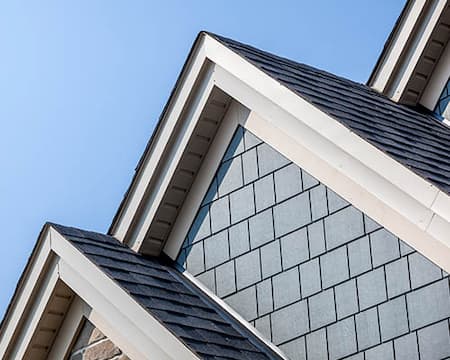Combating Organic Growth on Roofs: The Impact of Gloeocapsa Magma and Moss and How to Prevent Damage

Your roof protects your home from the elements, but it is also a prime target for organic growths such as Gloeocapsa magma and moss. If left unchecked, these growths can cause significant damage, affecting both the structural integrity and aesthetic appeal of your roof. Imagine coming home to find unsightly black streaks on your roof or patches of green moss clinging to your shingles. These aren't just cosmetic issues; they are signs of deeper problems that can lead to costly repairs if not addressed promptly. Understanding the impact of these organic growths and knowing how to combat them is essential for maintaining a healthy roof.
The Impact of Gloeocapsa Magma and Moss
- Structural Damage: Gloeocapsa magma, a type of blue-green algae, feeds on the limestone in your shingles, weakening them over time. Moss retains moisture, which can seep into the shingles and underlying structure, leading to rot and decay.
- Reduced Lifespan of Roofing Materials: The presence of Gloeocapsa magma and moss speeds up the wear and tear of roofing materials.
- Aesthetic Degradation: Black streaks from Gloeocapsa magma and green moss patches can make your roof look dirty and unkempt, impacting your home's curb appeal and market value.
- Energy Efficiency Issues: Organic growth affects your roof's ability to reflect sunlight. This can lead to higher cooling costs as your air conditioning system works harder to maintain a comfortable indoor temperature.
Effective Strategies to Combat Organic Growth
- Regular Inspections: Regularly inspect your roof for early signs of organic growth, such as black streaks and green patches.
- Proper Ventilation: Good ventilation in your roof and attic reduces moisture buildup, making it less likely for moss and algae to thrive.
- Trimming Overhanging Branches: Trees that overhang your roof can provide shade and retain moisture, fostering optimal conditions for moss and algae. Trim these branches to reduce shade and allow your roof to dry more quickly after rain, lowering the risk of organic growth.
- Zinc or Copper Strips: Installing zinc or copper strips along your roof's ridges can help prevent algae and moss growth. Rainwater washes small amounts of metal from these strips, inhibiting the growth of these organisms.
- Professional Soft Washing: Professional soft washing is highly effective for removing organic growth. Unlike pressure washing, which can damage shingles, soft washing uses low-pressure water and specialized cleaning solutions to safely remove Gloeocapsa magma, moss, and other contaminants.
Benefits of Soft Washing:
- Gentle on Your Roof: Soft washing is designed to be gentle on your shingles, preventing the damage that pressure washing can cause.
- Effective Cleaning Solutions: The cleaning solutions used in roof softwashing not only remove existing organic growth but also inhibit future growth, providing a longer-lasting clean.
- Improved Curb Appeal: Soft washing can restore your roof to its original condition, enhancing the overall appearance of your home.
Take proactive steps to address organic growth and save time and money in the long run by scheduling a professional pressure washing service today.
Schedule Your Pressure Washing Services In Michigan’s Upper Peninsula Today!